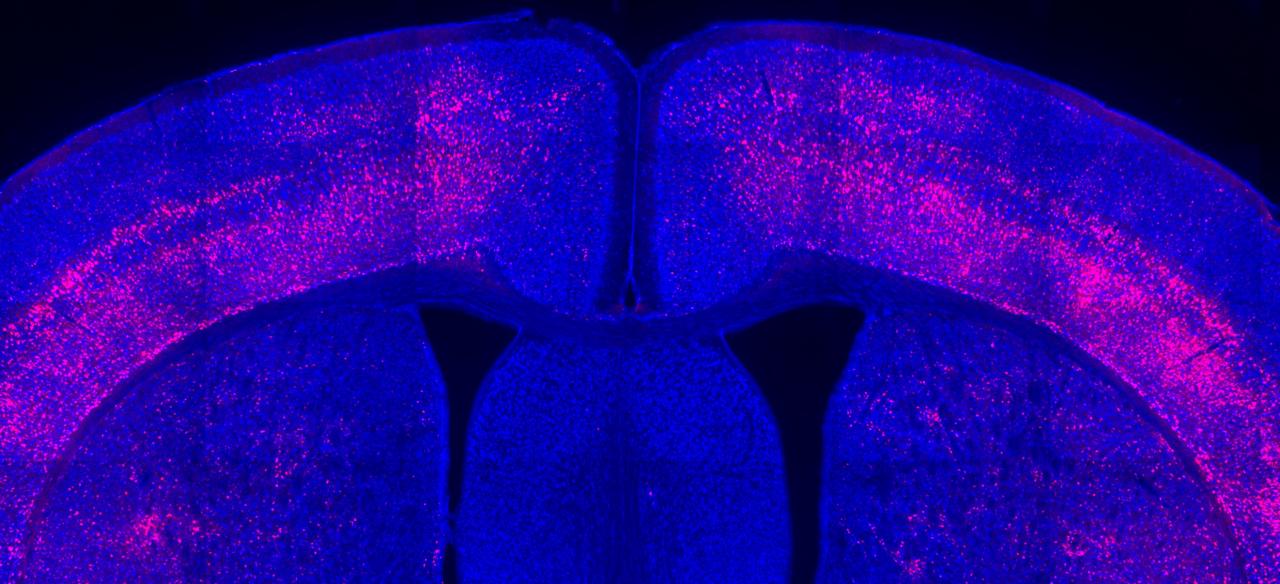Picower Institute-based collaboration will study mechanisms that might enable peripheral immune cells to deliver a potentially therapeutic molecule to the brain.
[Source: David Orenstein | The Picower Institute for Learning and Memory | November 2, 2023]
A new three-year research project, funded by the Simons Center for the Social Brain at MIT, posits that the immune system can be harnessed to help treat behavioral symptoms of autism.
In 2020, Associate Professors Gloria Choi of MIT and Jun Huh of Harvard Medical School showed that the immune system “cytokine” molecule IL-17a, when applied to a particular brain region in mice modeling autism, improved social behavior and reduced repetitive behaviors.
The study in Nature provided an explanation for reports by many pediatricians and parents that some people with autism improve in these ways when they happen to experience an infection. In mouse models, the team showed that peripheral immune cells, if they had been primed while in utero by a maternal infection, increased IL-17a when the mice sensed a new infection. In the brain, the molecule happens to calm the hyperactivity of neurons that produces the autism symptoms. The researchers also showed that even when other mouse models of autism did not have immune systems primed by maternal infection, their behavioral symptoms improved if IL-17a was directly injected into the brain.
Above: An image from the Choi lab highlights receptors for the cytokine IL-17a in a cross-section of a mouse’s brain.
The study left open questions that, if answered, could enable the development of an immunotherapy for brain disorders. How do immune cells in the gut that produce IL-17a find their way to the brain? How does the molecule then get into the brain, which stringently filters what goes in or out? Once it gets in, how does IL-17a act on brain cells to achieve the symptom improvement? The new project will seek to identify the mechanisms that drive such steps so that they can then be targeted for therapeutic enhancement.
“This is a novel way to think about treating neurological symptoms: using the immune system,” said Choi, Associate Professor in The Picower Institute and MIT’s Department of Brain and Cognitive Sciences, who leads the collaboration. “The question is whether we can use this system to heighten it or dampen it to modulate the brain.”
Four labs, including those of Choi, Huh, and Picower Institute investigators Myriam Heiman, Associate Professor, and Mriganka Sur, Newton Professor of Neuroscience, will collaborate on the project, each bringing very different expertise but also collaborating closely and sharing ideas to tackle the larger problem.
Close and enduring collaboration among newly assembled teams of scientists capable of spanning multiple scales of a complex research question is a hallmark of Simons Center grants, said Sur, who directs the center. This project is the ninth such multi-year “Targeted Project” the center has funded in its 11-year history.
“Progress on major questions in autism requires focused collaboration between researchers using complementary approaches,” notes Sur. “Right now, SCSB is supporting three targeted projects that involve 14 researchers, including cognitive, systems, molecular and computational scientists across building 46 and even outside MIT.”
